
Stephen King, a name synonymous with horror and suspense, has, over decades, captivated millions with his prolific literary output. His influence extends far beyond the printed page, permeating the landscape of cinema through nearly a hundred adaptations of his bestselling books, ranging from psychological thrillers to deeply human dramas. With his unique perspective as both a master storyteller and a fervent film enthusiast, his recently unveiled list of top 10 favorite movies of all time offers a rare and intriguing glimpse into the cinematic mind of a living legend.
This curated list, shared by the multi-hyphenate author on X (formerly Twitter), eschews any of his own highly acclaimed adaptations—such as “Misery,” “Stand By Me,” “The Green Mile,” and “The Shawshank Redemption”—allowing for an unadulterated exploration of the films that have personally resonated with him. What emerges is a fascinating collection dominated by ’70s classics, a testament to King’s coming-of-age during that pivotal cinematic era, and a remarkable breadth of genres, from gritty thrillers to beloved romantic comedies. It’s a testament to his discerning eye for craft and narrative, highlighting works by seminal directors like William Friedkin, Francis Ford Coppola, Martin Scorsese, Billy Wilder, and Steven Spielberg, alongside legendary performers such as Humphrey Bogart, Richard Dreyfuss, and Robert De Niro.
King’s selections underscore a sophisticated appreciation for cinematic artistry that transcends typical genre boundaries. This in-depth analysis will explore each of his chosen films, dissecting their thematic depth, technical mastery, and enduring cultural impact through an authoritative lens. As we embark on this journey through his top cinematic picks, we gain not only insight into the films themselves but also a deeper understanding of the influences that may subtly shape the imagination of one of the world’s most iconic authors.

1. **Sorcerer (1977)**Stephen King leads his list, though “in no particular order,” with William Friedkin’s 1977 thriller “Sorcerer.” This choice immediately signals King’s independent and often contrarian critical leanings. “Sorcerer” was a notorious critical and box office disaster upon its initial release, largely overshadowed by the runaway success of “Star Wars” just a month prior in 1977. Its original reception, however, belies its eventual status as an underrated masterpiece, a re-evaluation that King clearly endorses.
The film, described as a story about “four fugitives from very different backgrounds taking refuge in a Central American village who agree to transport trucks loaded with unstable explosives across perilous jungle roads,” shares thematic DNA with “The Treasure of the Sierra Madre,” another film on King’s list. Friedkin himself, acclaimed director of “The Exorcist,” considered “Sorcerer” his “most personal and difficult project,” suggesting a deep artistic commitment that resonated with King. Its narrative of desperate individuals facing overwhelming odds, a common King motif, is likely a key draw.
“Sorcerer” has since garnered a formidable cult following and significant critical reappraisal. Figures like Quentin Tarantino have lauded it as a “masterpiece,” and even “The Godfather Part II” director Francis Ford Coppola referred to it as a “forgotten classic.” This shift in perception from box-office bomb to cinematic gem speaks volumes about the film’s quality and its ability to captivate discerning viewers over time, even if it “made just $9 million off a $22 million budget.”
The film’s most memorable sequences, particularly the “incredibly riveting ‘how did they do that?’ sequence where the trucks have to cross a rickety wooden bridge over a river during a rainstorm,” highlight Friedkin’s masterful direction and the sheer tension he was able to build. King’s inclusion of “Sorcerer” showcases his appreciation for films that push boundaries and demand a re-evaluation, prioritizing artistic ambition and visceral experience over initial commercial success. This selection immediately grounds King’s list in a serious, cinephilic tradition.
Read more about: Stephen King’s Unconventional Top 10: Deconstructing the Master of Horror’s All-Time Favorite Films

2. **The Godfather Part II (1974)**Following the challenging “Sorcerer,” King’s list includes a more conventionally acclaimed masterpiece: Francis Ford Coppola’s six-time Academy Award-winning “The Godfather Part II.” This film is not only a sequel but also a prequel, masterfully weaving together two timelines to deepen the saga of the Corleone family. Its presence on King’s list is hardly surprising, given its universal recognition as one of the greatest films ever made; Steven Spielberg himself famously picked “The Godfather” as “the greatest American film ever made,” and its sequel often receives similar accolades.
“The Godfather Part II” showcases seminal director Francis Ford Coppola at the height of his powers, delivering a narrative rich in moral complexity and operatic scope. The film’s intricate plot, exploring themes of power, family loyalty, and the corrupting influence of ambition, offers a profound look into the American experience. Its critical standing is affirmed by its inclusion on various “greatest films” lists, such as the American Film Institute’s, where it ranks at No. 32, a testament to its enduring quality and impact on cinematic history.
Beyond its critical acclaim, the film features legendary performer Robert De Niro, who delivers a captivating performance as the young Vito Corleone, earning him an Academy Award. De Niro’s presence marks one of two entries on King’s list featuring the esteemed actor, underscoring King’s appreciation for powerful performances and consistent artistic collaborations. The film’s meticulous attention to period detail, profound character development, and unforgettable dialogue contribute to its status as a benchmark for epic storytelling.
Notably, “The Godfather Part II” is also one of more than half the films on King’s list that have been adapted from novels. This connection to literary origins, in this case, Mario Puzo’s compelling narrative, likely appeals to King as a novelist. His appreciation for a film that translates complex storytelling from page to screen with such fidelity and artistic vision further illuminates his criteria for a truly great movie, proving that King values both daring artistic choices and universally acknowledged masterpieces.
Read more about: Robert De Niro at 80: A Deep Dive into the Legendary Actor’s Transformative Artistry, Enduring Legacy, and Remarkable Personal Evolution
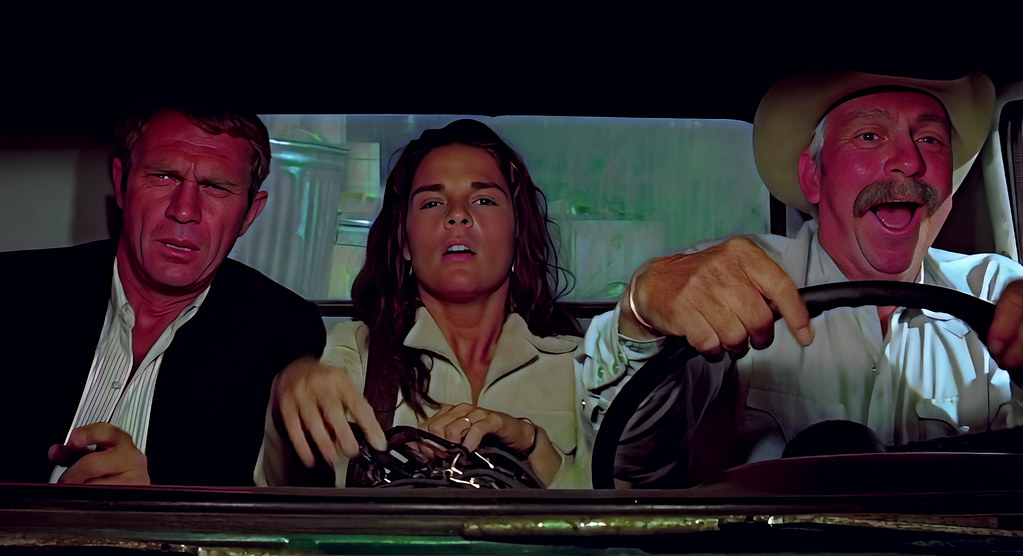
3. **The Getaway (1972)**King’s diverse taste continues with Sam Peckinpah’s 1972 crime drama, “The Getaway.” This gritty, Bonnie & Clyde-esque caper stars the iconic duo of Steve McQueen and Ali MacGraw, delivering a raw and intense narrative that aligns with the darker, more visceral aspects of King’s own literary output. The film’s inclusion highlights King’s appreciation for hard-boiled storytelling and uncompromising action, genres often explored in his non-horror works.
“The Getaway,” based on Jim Thompson’s 1958 novel, is another example on King’s list of a successful literary adaptation, a detail that is consistently present across his selections. King’s admiration for Thompson’s work is explicitly noted, underscoring his discerning eye for authors whose narratives translate effectively to the screen. Peckinpah, known as an “iconic action director,” masterfully crafts a tense and relentless pursuit story, imbuing it with his signature blend of violence and moral ambiguity.
The film’s impact lies in its relentless pacing and the magnetic chemistry between McQueen and MacGraw, who portray a pair of bank robbers on the run. Their desperation and the escalating stakes provide a palpable sense of tension throughout the film, a quality that is certainly resonant with King’s own narrative style. It’s a film that doesn’t shy away from the darker corners of human nature, a thematic thread that King frequently explores in his novels.
“The Getaway” might seem a straightforward genre flick, but King’s choice suggests he sees beyond surface-level action. He likely values its stark portrayal of consequences, the complex motivations of its characters, and its unflinching realism. Its placement alongside cinematic giants like “The Godfather Part II” speaks to King’s belief in the power of well-executed genre cinema to achieve artistic profundity and memorable impact.
Read more about: Stephen King’s Unconventional Top 10: Deconstructing the Master of Horror’s All-Time Favorite Films
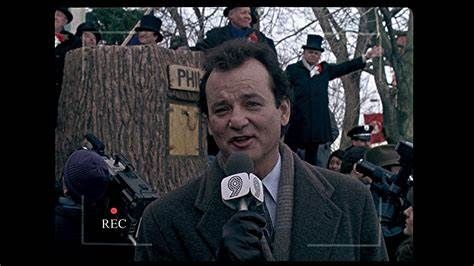
4. **Groundhog Day (1993)**Perhaps the most surprising entry on Stephen King’s list, especially for a writer “known for his hair-raising works,” is the 1993 Bill Murray and Andie MacDowell time-loop romantic comedy, “Groundhog Day.” Directed by Harold Ramis, this film is a universally beloved staple in its genre, and its inclusion reveals a delightful and unexpected facet of King’s cinematic preferences—his appreciation for films that blend humor with profound philosophical undertones.
“Groundhog Day” has inspired a wide range of subsequent “repeating-day movies,” from “Palm Springs” (2020) to “Happy Death Day” (2017), cementing its status as a seminal work in the time-loop subgenre. Its comedic brilliance is undeniable, but beneath the surface, the film offers a surprisingly deep exploration of self-improvement, existentialism, and the transformative power of empathy and connection. Bill Murray’s performance as the cynical weatherman Phil Connors, trapped in a perpetual February 2nd, is a masterclass in comedic evolution, depicting a character’s profound growth with wit and nuance.
The film’s ingenious premise and sharp writing elevate it beyond mere romantic comedy. It delves into the human condition, exploring themes of redemption and the search for meaning in repetition. This resonance with deeper human struggles, even within a lighthearted framework, likely appeals to King, who often explores the psychological depths of his characters, even in his most fantastical narratives. The film’s ability to be “engaging but thoughtful” aligns perfectly with IndieWire’s own editorial style.
King’s endorsement of “Groundhog Day” as a “quasi-modern masterpiece” by many, reflects its unique ability to be both entertaining and intellectually stimulating. It’s a film that, despite its fantastical element, is deeply rooted in character and theme, demonstrating that King’s appreciation for film extends to stories that celebrate the human spirit and personal transformation, proving his palate is far richer than just horror, embracing narratives that provoke both laughter and reflection.
Read more about: Stephen King’s Unconventional Top 10: Deconstructing the Master of Horror’s All-Time Favorite Films
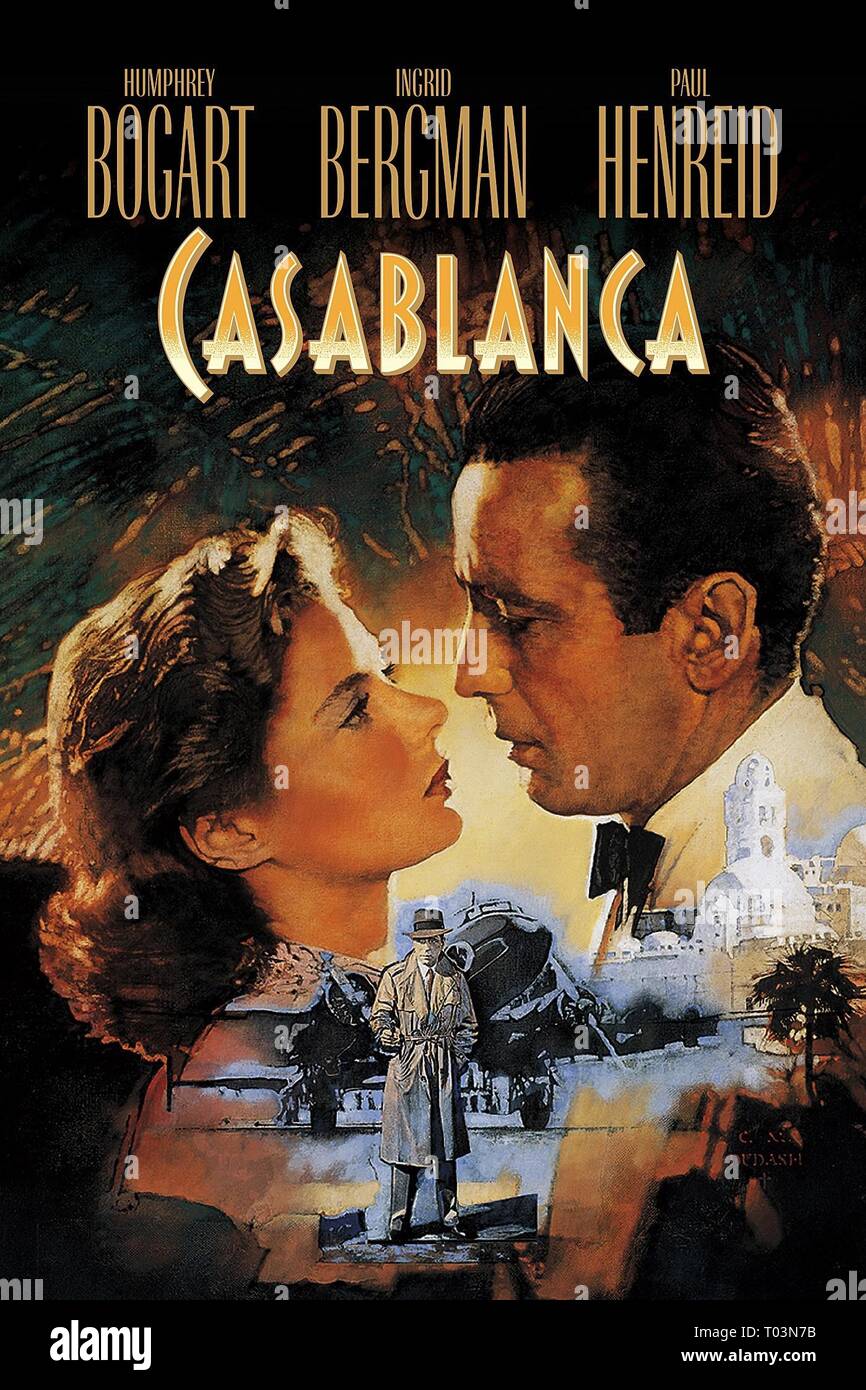
5. **Casablanca (1942)**No respectable cinephile’s list, or indeed, Stephen King’s, would be complete without “Casablanca,” the ever-quotable and devastatingly moving 1942 romantic drama. Starring the legendary Humphrey Bogart and Ingrid Bergman, this film is a cornerstone of classic Hollywood, set against the tumultuous backdrop of World War II. Its inclusion on King’s list solidifies his respect for cinematic heritage and enduring narratives that continue to resonate across generations.
“Casablanca” is widely recognized for its iconic dialogue, indelible characters, and a poignant love story intertwined with themes of sacrifice, duty, and patriotism. Its status is further enhanced by its high ranking on prestigious lists, notably coming in at No. 3 on the American Film Institute’s “The 100 Greatest American Films of All Time,” placing it among the undisputed masterpieces of American cinema. This kind of historical and critical weight is clearly valued by King.
The film’s masterful direction by Michael Curtiz, combined with Bogart’s charismatic portrayal of Rick Blaine and Bergman’s luminous performance as Ilsa Lund, creates a narrative tapestry that is both emotionally gripping and intellectually stimulating. The complex moral choices faced by its characters, particularly Rick’s ultimate decision, contribute to its timeless appeal and its reputation as a benchmark for romantic drama and wartime storytelling.
King’s appreciation for “Casablanca” highlights his understanding of cinema’s power to transcend time and genre. It’s a narrative that, despite its age, continues to speak to universal human experiences, demonstrating that King, while known for his contemporary horrors, also possesses a deep reverence for the classics that have shaped the art form. Its presence confirms that King’s cinematic tastes are broad, encompassing both re-evaluated cult hits and universally cherished golden age masterpieces.
Read more about: Unmasking the Ages: How Old Were These Legendary Actors When They Embodied Their Most Iconic Film Roles?

6. **The Treasure of the Sierra Madre (1948)**Continuing his journey through cinematic history, Stephen King’s list includes John Huston’s 1948 neo-Western, “The Treasure of the Sierra Madre.” This choice underscores King’s appreciation for classic narratives rooted in human greed and ambition, echoing themes often explored in his own literary universe. The film, a gritty portrayal of three down-on-their-luck Americans searching for gold in Mexico, is celebrated for its stark realism and moral complexity.
Huston’s directorial vision brought a raw authenticity to the screen, depicting the psychological toll of the arduous pursuit of wealth. Its narrative thrust, which sees the protagonists descend into paranoia and betrayal, offers a powerful cautionary tale about the corrupting influence of avarice. The film’s inclusion highlights King’s discerning eye for stories that probe the darker aspects of the human condition, even within a seemingly adventurous framework.
“The Treasure of the Sierra Madre” also notably features the legendary Humphrey Bogart, marking one of two entries on King’s list starring the iconic actor, the other being “Casablanca.” This recurrence of Bogart speaks to King’s recognition of enduring star power and performances that leave an indelible mark. Furthermore, the film is another example on King’s list of a successful literary adaptation, aligning with his consistent appreciation for narratives that transition effectively from page to screen, a testament to his understanding of storytelling across mediums.
Its status as a film that “might feel at home in other all-time rankings” attests to its critical longevity and widespread acclaim, solidifying King’s list with another entry that is both personally resonant and widely recognized for its artistic merit. The film’s exploration of desperate men driven by an insatiable hunger for riches surely resonated with an author who frequently examines the breaking points of ordinary individuals under extraordinary pressure.
Read more about: Stephen King’s Unconventional Top 10: Deconstructing the Master of Horror’s All-Time Favorite Films

7. **Double Indemnity (1944)**King’s cinematic tastes dive further into the Golden Age of Hollywood with Billy Wilder’s masterful 1944 film noir, “Double Indemnity.” This quintessential entry into the genre showcases Wilder’s precision in storytelling and character development, delivering a narrative steeped in cynical wit and moral ambiguity. Its presence on King’s list highlights his admiration for tight plotting, sharp dialogue, and the pervasive sense of dread that is a hallmark of the noir style, elements he often masterfully employs in his own work.
Adapted from James M. Cain’s 1943 novel, “Double Indemnity” is a prime example of a literary work translated flawlessly to the screen, a characteristic that consistently appeals to King as a novelist. The film’s intricate plot follows an insurance salesman manipulated into a murder scheme by a seductive femme fatale, unraveling a tale of passion, deceit, and inevitable doom. Its narrative structure, told through flashback, builds a suffocating tension that remains potent even decades later.
“Double Indemnity” is not merely a genre piece; it is a foundational text of film noir, influencing countless thrillers that followed. Its critical standing is robust, underscored by its placement at No. 29 on the American Film Institute’s list of “The 100 Greatest American Films of All Time.” This kind of canonical recognition, coupled with its profound impact on cinematic style, cements its status as a film of immense cultural and artistic significance, a fact clearly appreciated by King.
The film’s sharp, cynical tone and its exploration of fatalistic themes align perfectly with the kind of psychological darkness King often explores. It’s a film that exposes the vulnerabilities of human nature when confronted with temptation, creating a narrative that is as intellectually stimulating as it is dramatically compelling. King’s inclusion of such a landmark film reinforces his discerning taste for cinema that is both entertaining and analytically rich.
Read more about: Unmasking the Ages: How Old Were These Legendary Actors When They Embodied Their Most Iconic Film Roles?
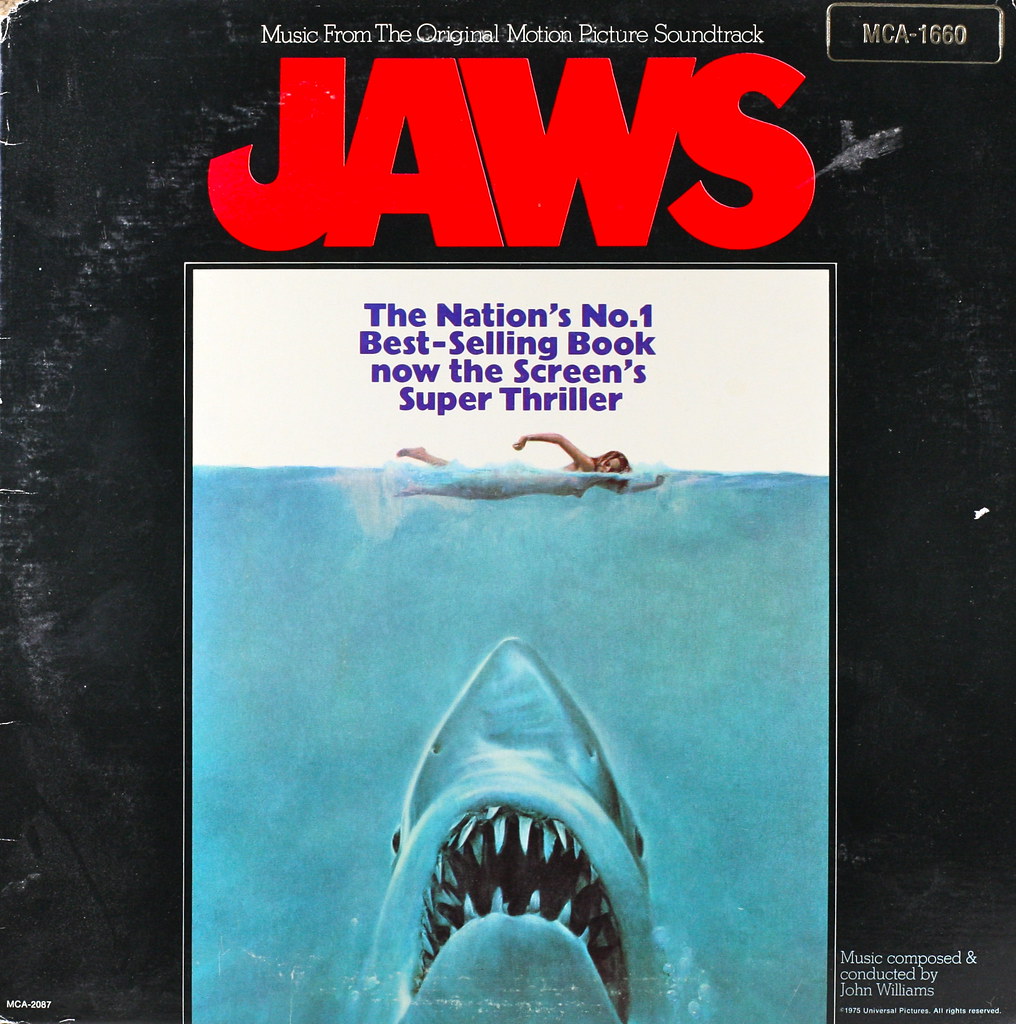
8. **Jaws (1975)**Shifting gears to a pivotal moment in modern cinema, Stephen King includes Steven Spielberg’s groundbreaking 1975 thriller, “Jaws.” This film is universally acknowledged as the “first-ever summer blockbuster,” a phenomenon that irrevocably altered the film industry’s approach to seasonal releases and high-concept storytelling. King’s endorsement of “Jaws” speaks to his appreciation for a masterfully crafted thriller that combines visceral suspense with compelling character work, a blend he frequently achieves in his own novels.
“Jaws” recently celebrated its 50th anniversary, a testament to its enduring cultural impact and its continued ability to captivate audiences across generations. The film’s innovative use of suspense, famously withholding the full reveal of its antagonist, the great white shark, built unbearable tension. Spielberg’s direction created an immersive and terrifying experience, proving that what is unseen can be far more frightening than what is explicitly shown, a lesson King knows well from his own horror writing.
As another successful adaptation from a novel, in this case, Peter Benchley’s bestseller, “Jaws” further illustrates King’s preference for films with strong literary foundations. The film’s narrative of a small community terrorized by a predatory force and the desperate measures taken to stop it, resonates deeply with many of King’s own explorations of collective fear and heroism. Its narrative power transcends mere spectacle, embedding itself in the cultural consciousness as a benchmark for thrilling cinema.
“Jaws” holds a significant place in film history, not only for its commercial success but also for its artistic merits, ranking at No. 56 on the American Film Institute’s list. The film’s iconic score, memorable performances (Richard Dreyfuss being one of the two actors on King’s list to feature in two films, the other being Bogart), and its lasting influence on subsequent creature features and thrillers make it a deserving entry on any serious cinephile’s list. Its inclusion by King reaffirms its status as a masterpiece of suspense and storytelling that continues to be celebrated and will soon feature in an Academy Museum exhibition, further solidifying its legacy.
Read more about: Dipping Your Toes into Terror? Here Are 14 Must-Watch Horror Movies for First-Timers!
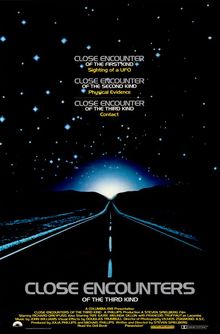
9. **Close Encounters of the Third Kind (1977)**Doubling down on his admiration for Steven Spielberg, Stephen King includes the director’s visionary 1977 sci-fi drama, “Close Encounters of the Third Kind.” This film presents a stark contrast to the terror of “Jaws,” instead offering a wondrous and hopeful exploration of humanity’s first contact with extraterrestrial intelligence. King’s selection of this film demonstrates his breadth of taste, embracing science fiction that is both awe-inspiring and deeply human, moving beyond mere spectacle to explore profound themes of communication and discovery.
“Close Encounters of the Third Kind” stands as a landmark in science fiction cinema, renowned for its groundbreaking visual effects and its emotionally resonant narrative. The film masterfully builds a sense of mystery and wonder, drawing the audience into the protagonist Roy Neary’s obsession with a recurring musical motif and a mountain shaped like Devil’s Tower. Its storytelling prioritizes the psychological impact of such an event on ordinary people, providing a grounded, relatable perspective to an extraordinary premise.
Notably, while not an adaptation of a pre-existing novel in the traditional sense, “Close Encounters of the Third Kind” received a novelization released concurrently with the film’s debut, maintaining King’s consistent connection to literary origins. This connection, whether through direct adaptation or complementary narrative, points to King’s interest in the symbiotic relationship between cinematic and literary storytelling, showcasing how different mediums can expand on a singular creative vision.
This film, released in the same year as the box office juggernaut “Star Wars,” captured a different facet of the sci-fi landscape, one focused more on wonder and intellectual curiosity than space opera. King’s inclusion underscores his appreciation for narratives that inspire imagination and delve into the unknown with a sense of optimism. It’s a film that continues to resonate for its enduring message of humanity’s potential for connection across cosmic divides, solidifying its place as a thoughtful and engaging piece of cinema, very much in line with the “engaging but thoughtful tone” IndieWire values.
Read more about: Teri Garr: An Enduring Legacy of Wit and Versatility, From Dancer to Acclaimed Actress
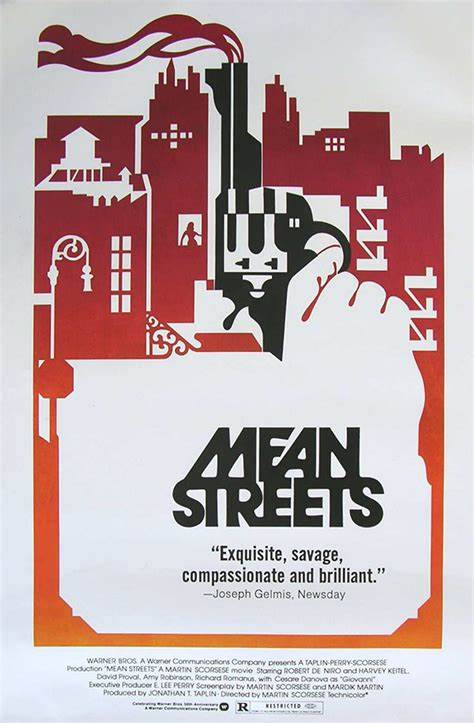
10. **Mean Streets (1973)**Concluding his remarkable list, Stephen King honors Martin Scorsese’s raw and groundbreaking 1973 gangster film, “Mean Streets.” This selection is particularly significant as it marks Scorsese’s first of several collaborations with legendary performer Robert De Niro, an actor who appears twice on King’s list (the other being “The Godfather Part II”). “Mean Streets” is lauded for its visceral energy and its unflinching portrayal of life in New York’s Little Italy, solidifying Scorsese’s reputation as a visionary director and launching De Niro’s trajectory toward superstardom.
“Mean Streets” is a quintessential ’70s classic, a decade that King himself was coming of age in and which heavily dominates his selections. The film’s semi-autobiographical narrative delves into the lives of small-time hoods grappling with faith, loyalty, and the lure of a dangerous lifestyle. Scorsese’s innovative use of music, hand-held camera work, and improvisational performances created a gritty, authentic depiction of urban angst and moral conflict, influencing generations of filmmakers.
The film’s raw, kinetic style and its deep exploration of character psychology, particularly the volatile dynamic between Harvey Keitel’s Charlie and De Niro’s Johnny Boy, would undoubtedly appeal to King’s own preoccupation with character-driven narratives and the internal struggles of his protagonists. “Mean Streets” is not just a gangster film; it is a profound character study that captures the complexities of friendship, religion, and the allure of self-destruction, themes that resonate throughout much of King’s extensive oeuvre.
While some might debate its place among Scorsese’s *very* best films, King’s choice highlights its foundational importance in the director’s career and its significant cultural impact. Its intense realism and uncompromising vision firmly establish it as a cornerstone of New Hollywood cinema. King’s selection of “Mean Streets” underscores his discerning eye for influential works that define genres and launch careers, concluding a list that is as diverse as it is deeply personal, offering unparalleled insights into the cinematic mind of one of the greatest storytellers of our time.
Read more about: Al Pacino at 83: Beyond the Godfather – Unveiling a Cinematic Titan’s Unfolding Legacy, Personal Truths, and Unyielding Dedication to the Craft
As we reach the conclusion of Stephen King’s formidable top ten, what becomes abundantly clear is that the master of horror possesses a cinematic palate far richer and more complex than his genre might suggest. His list is not merely a collection of favorites, but a thoughtful curation reflecting a deep appreciation for the craft, narrative innovation, and enduring impact of film across diverse genres and eras. From the gritty realism of 1970s thrillers that defined his formative years to the timeless romance of classic Hollywood and the philosophical depth of a time-loop comedy, King’s selections reveal a discerning critic and an avid enthusiast. This list stands as a powerful testament to the universal language of storytelling, showcasing the varied cinematic influences that have undoubtedly shaped the imagination of a literary legend, offering fans and film aficionados alike a compelling roadmap to the movies that move a master.



